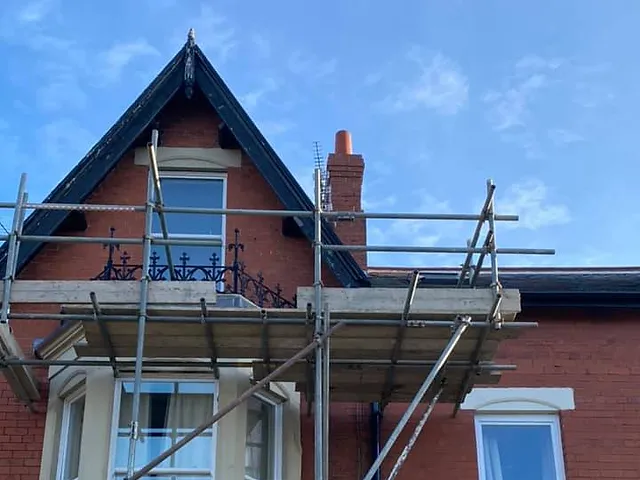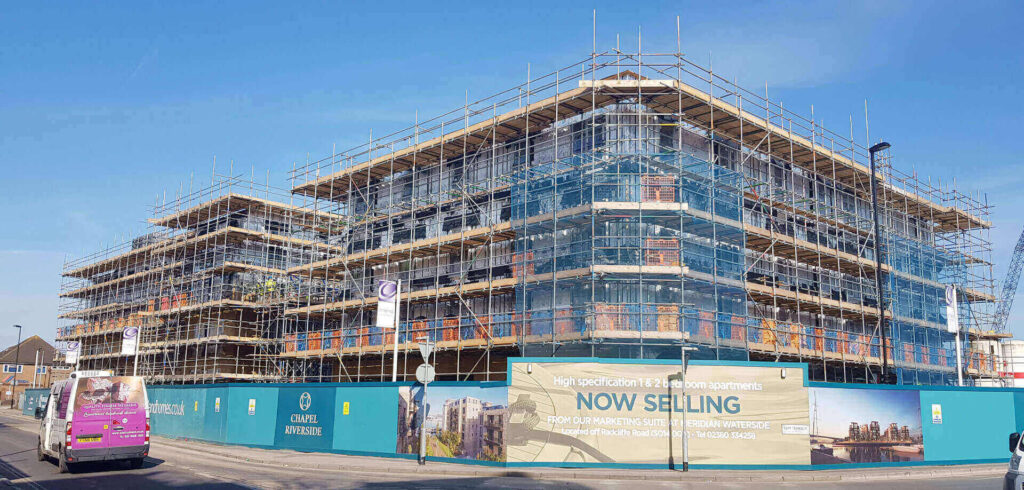
Domestic scaffolding
“Domestic scaffolding” typically refers to the use of scaffolding in residential or domestic construction projects. Scaffolding is a temporary structure erected to support workers and materials during the construction, repair, or maintenance of buildings and other structures. In the context of domestic scaffolding, it’s used for tasks such as:
Construction and Renovation: Scaffolding is commonly used in residential construction and renovation projects. It provides a stable platform for workers to access different levels of a building, facilitating tasks like bricklaying, painting, window installation, and roofing.
Maintenance and Repairs: Homeowners may use scaffolding for maintenance and repairs, such as fixing the exterior of a house, repairing gutters, or addressing structural issues. Scaffolding provides a safe and stable working environment at various heights.
Chimney Repairs: Scaffolding is often employed for chimney repairs or maintenance. It allows workers to reach the chimney safely and perform tasks like repointing, replacing bricks, or installing chimney caps.
Exterior Cleaning: Scaffolding can be used for exterior cleaning and painting of a residential property. It allows workers to reach and cover large areas efficiently.
Installation of Utilities: Scaffolding might be necessary when installing or repairing utilities on the exterior of a building, such as electrical wiring, lighting fixtures, or security cameras.
When using domestic scaffolding, it’s crucial to prioritize safety. This includes proper assembly and installation, regular inspections, and adherence to safety guidelines. Additionally, local regulations and permits may be required for the erection of scaffolding, so it’s essential to comply with any legal requirements in your area.

Commercial scaffolding
“Commercial scaffolding” refers to the use of scaffolding in the context of commercial or business-related construction projects. This type of scaffolding is employed in various commercial settings for tasks ranging from construction and maintenance to renovation and repair. Here are some common applications of commercial scaffolding:
New Construction: In commercial building projects, scaffolding is often used during the construction phase to provide workers with safe access to different levels of the structure. It facilitates tasks such as masonry, concrete work, steel erection, and other construction activities.
Building Maintenance: Commercial properties, including office buildings, hotels, and shopping centers, often require regular maintenance. Scaffolding can be used for tasks like window cleaning, facade repairs, painting, and other maintenance activities.
Renovation and Remodeling: When commercial properties undergo renovations or remodeling, scaffolding is essential for providing a secure platform for workers. This includes tasks like interior renovations, structural modifications, and updates to building facades.
Facade Inspection and Repair: Scaffolding is commonly used for inspecting and repairing the exteriors of commercial buildings. This can involve tasks such as addressing structural issues, repairing or replacing cladding, and performing routine inspections.
Installation of Signage and Lighting: Scaffolding is utilized for installing or maintaining external signage, lighting fixtures, and other elements on the exterior of commercial buildings.
Event Construction: In the context of large events, such as concerts, festivals, or trade shows, scaffolding may be used to create temporary structures for stages, viewing platforms, or other event-related infrastructure.
Similar to domestic scaffolding, safety is a top priority when using scaffolding in commercial settings. Compliance with safety regulations, proper assembly and installation, regular inspections, and the use of personal protective equipment are crucial aspects of ensuring a safe working environment. Additionally, obtaining the necessary permits and adhering to local regulations is essential in commercial construction projects.


